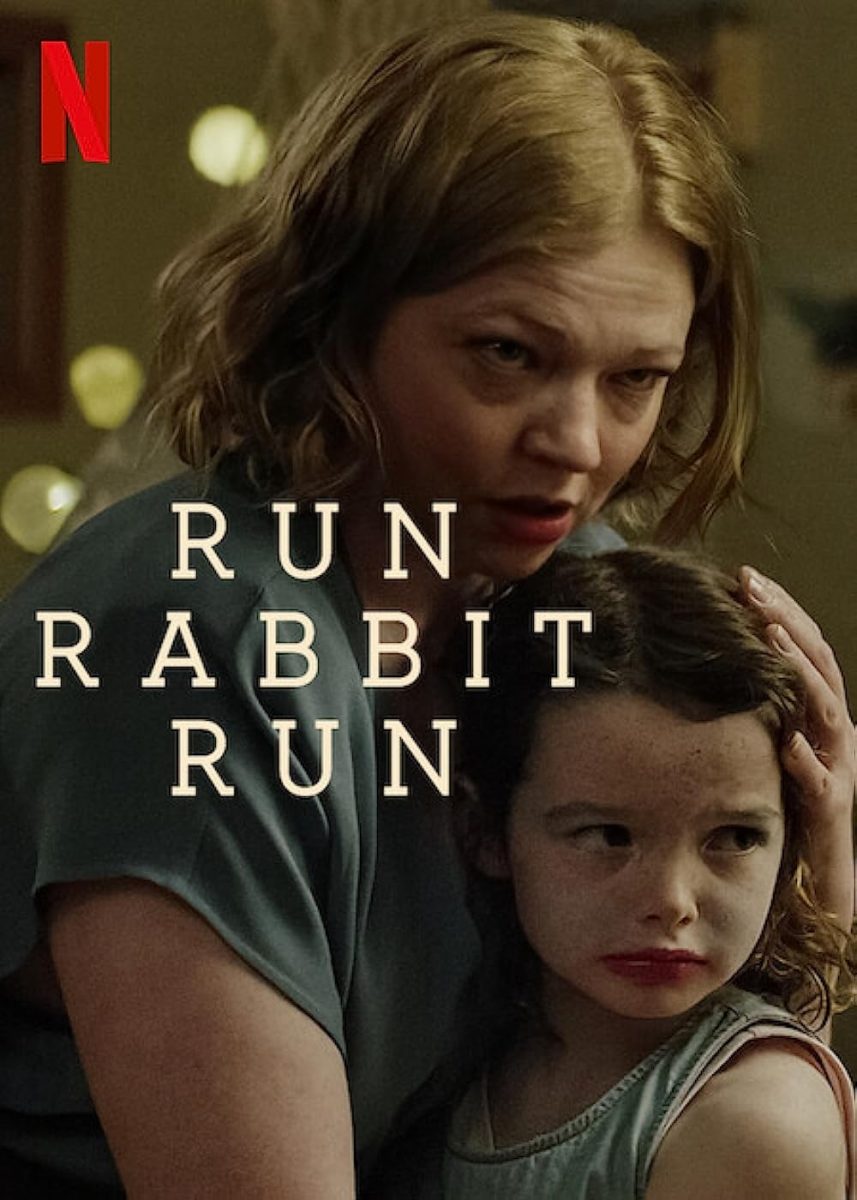“Run Rabbit Run” is a slow-burning thriller that came to Netflix this summer.
It begins with a shot of Sarah, the mother, who doesn’t know what to do with her daughter, Mia. Ever since Mia’s seventh birthday, she hasn’t been her usual self. She insists that she’s Alice. That so happens to be the name of Sarah’s sister, who went missing when they were both children. Dennis, Sarah’s ex-husband and Mia’s father, hasn’t provided much help in the situation, and it’s only more difficult for Sarah since her dad passed away recently. Mia insists that she wants to see Sarah’s estranged mother, Joan, and Sarah can’t make heads or tails of why Mia’s acting so strangely. What Mia’s insistence sickly feeds off of is Sarah’s anguish over her sister having gone missing: likely the reason why she and her mother became estranged. Despite Sarah’s paranoia that Mia might have a connection with her sister, Alice, and refusing to see her mother after the many years she’s been absent from Sarah’s life, Sarah gives in.
Sarah Snook, the “Succession” actress who plays Sarah, gives a superb performance as the lead, putting effort into even the subtlest gestures. That can’t be said about many of the thrillers on Netflix and beyond. Actors and actresses tend to bring an overbearing amount of energy to the more tense scenes while being robotic in scenes with less of a build-up and more dialogue.
One scene, closer to when Mia’s delusions start to take hold, features Sarah getting a call from the senior home where her mother’s been staying. Not wanting to even speak about her mother, Sarah hangs up, but Mia, sneaking up on her, asks, “Who’s calling you?”
“Nobody,” Sarah mumbles after looking away and fumbling for an answer.
“A ghost,” Mia giggles while Sarah forces an uncomfortable laugh.
Moments such as this one define Snook’s entire performance. She doesn’t let up.
“Run Rabbit Run’s” lighting contributed to its overall workability too, reminding me of “The Babadook” both in its portrayal of a desperate and hurt, single mother with a child who drives her crazy, as well as the consistently dark, gray atmosphere, creating an unsettling tone. The same could be said of the score, with the usual high-strung notes that scream “something’s behind you!” These were well-placed, but there were a few times when the overpowering bellows that accented the end of every frightening scene made me roll my eyes and wish the editor had more subtlety.
By far, the push of the film came from its story, with its twists and turns that pitted Sarah and Mia against each other in a battle of who’s doing what to whom and blurring the line between reality and imagination. I often asked myself, especially near the end, did that actually happen, or was it in a dream? Confusing its audience, “Run Rabbit Run” accomplished a twist-of-fate that took me by surprise.
There was also the use of symbols in “Run Rabbit Run,” including a rabbit that seemingly came from nowhere. Mia immediately adopts it, despite it being a haunting reminder of the rabbit trapping that Sarah’s father used to do while she and her family lived in the Australian outback before her sister’s disappearance. Another is the murky, algae-filled water that haunts Sarah’s dreams, another reminder of Sarah’s life in the outback, particularly the ravine sitting next to her family’s home.
The incredible tumult that Sarah experiences throughout had me thinking about her as a recently divorced mother, who lost her father, doing her best to support herself and her daughter. As a psychological thriller, the story did well to exaggerate the stress and paranoia that Sarah was experiencing as an analogy to what anyone else in her shoes would go through with the immense loss she was experiencing.
The pressure of continuing her life in the face of her dad’s death was too much to handle, and her daughter experiencing similar anxieties ultimately broke Sarah. So, not only is Sarah a way for audiences to experience the unsettling and startling thrills of “Run Rabbit Run,” but she’s also a character with depth who we can empathize with and see ourselves in.
“Run Rabbit Run” is currently on Netflix and was financed in part by Screen Australia, the Australian federal government’s main funding body for Australian films. I’d say it’s money well spent. 5/5







